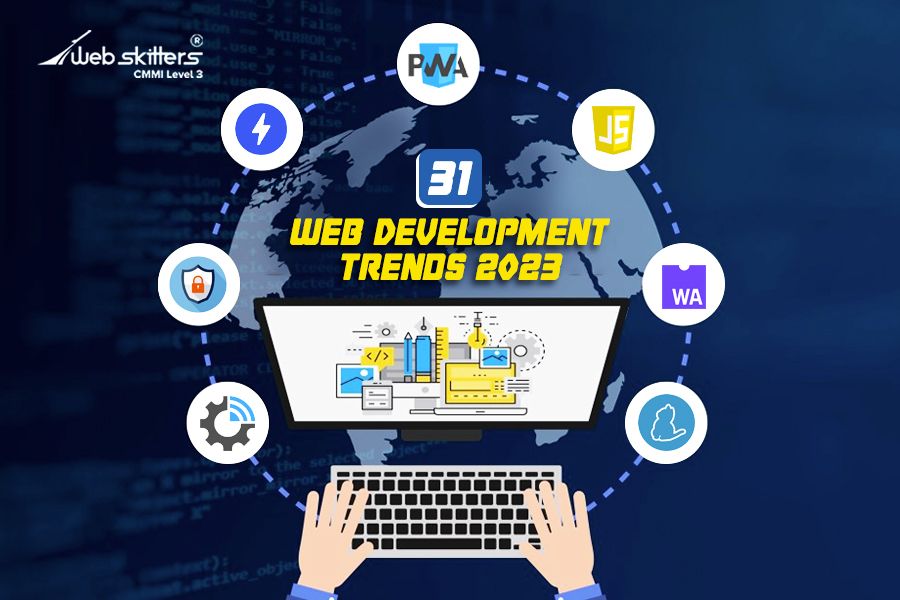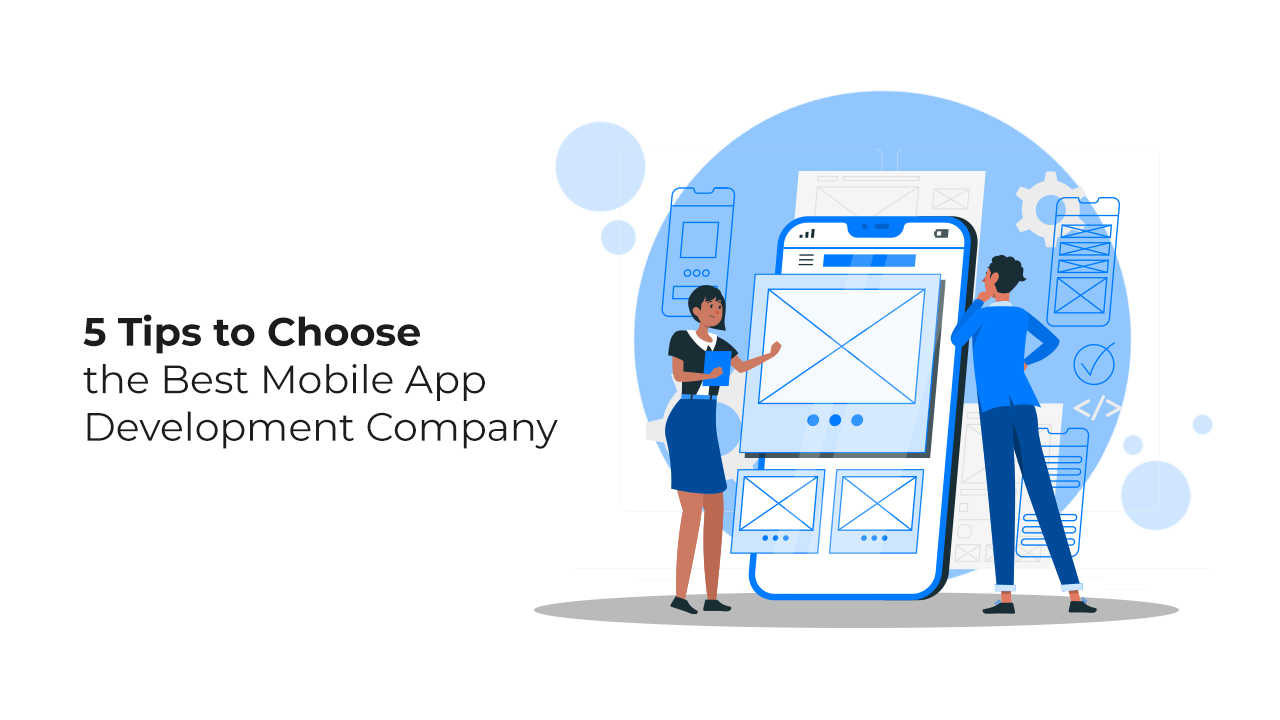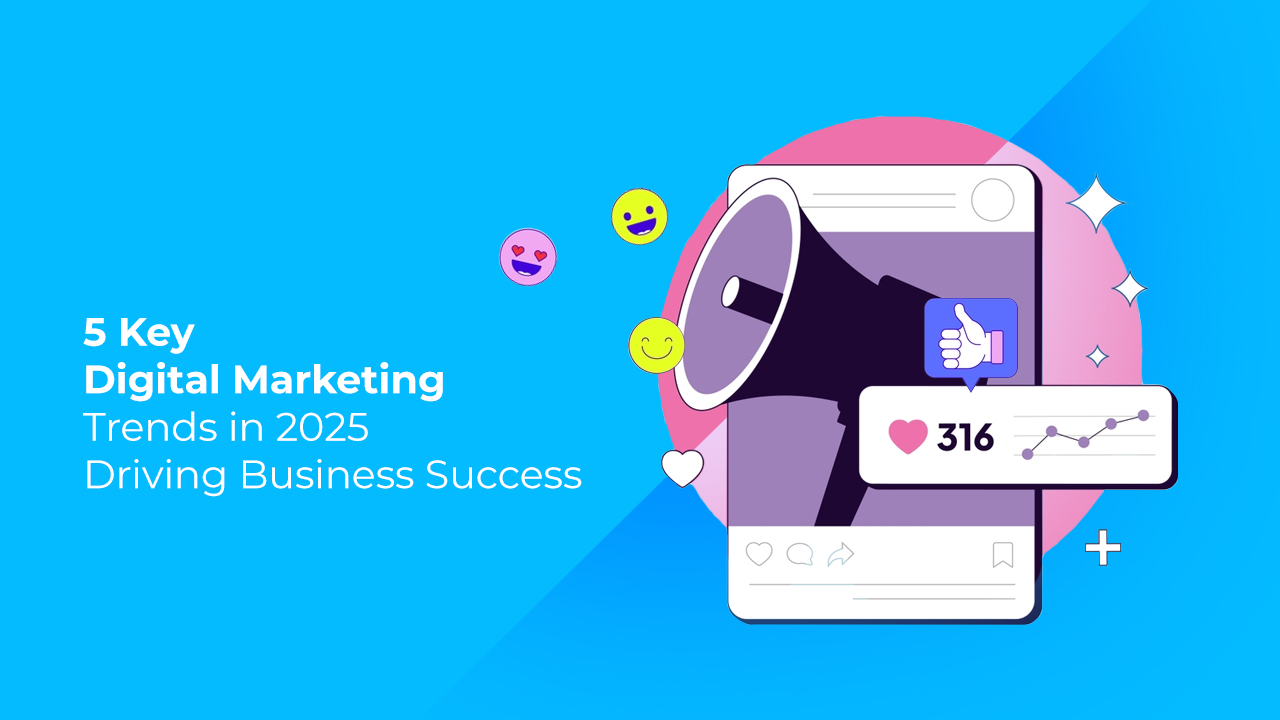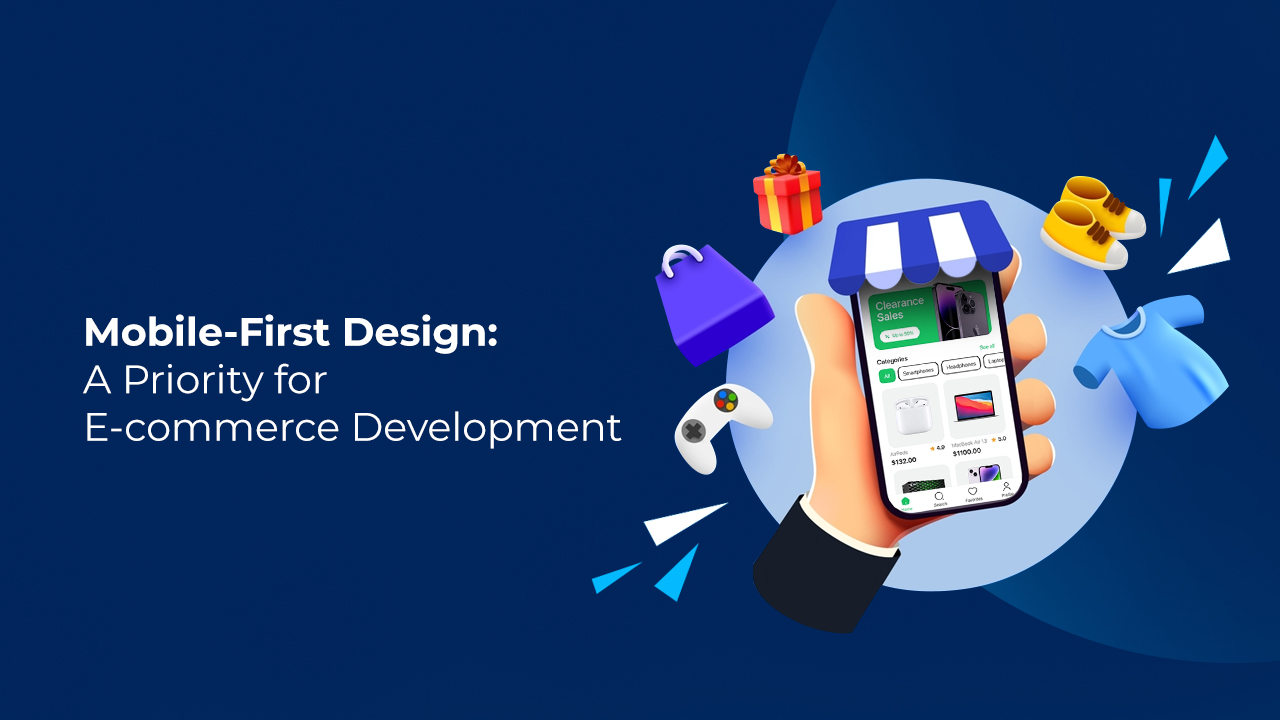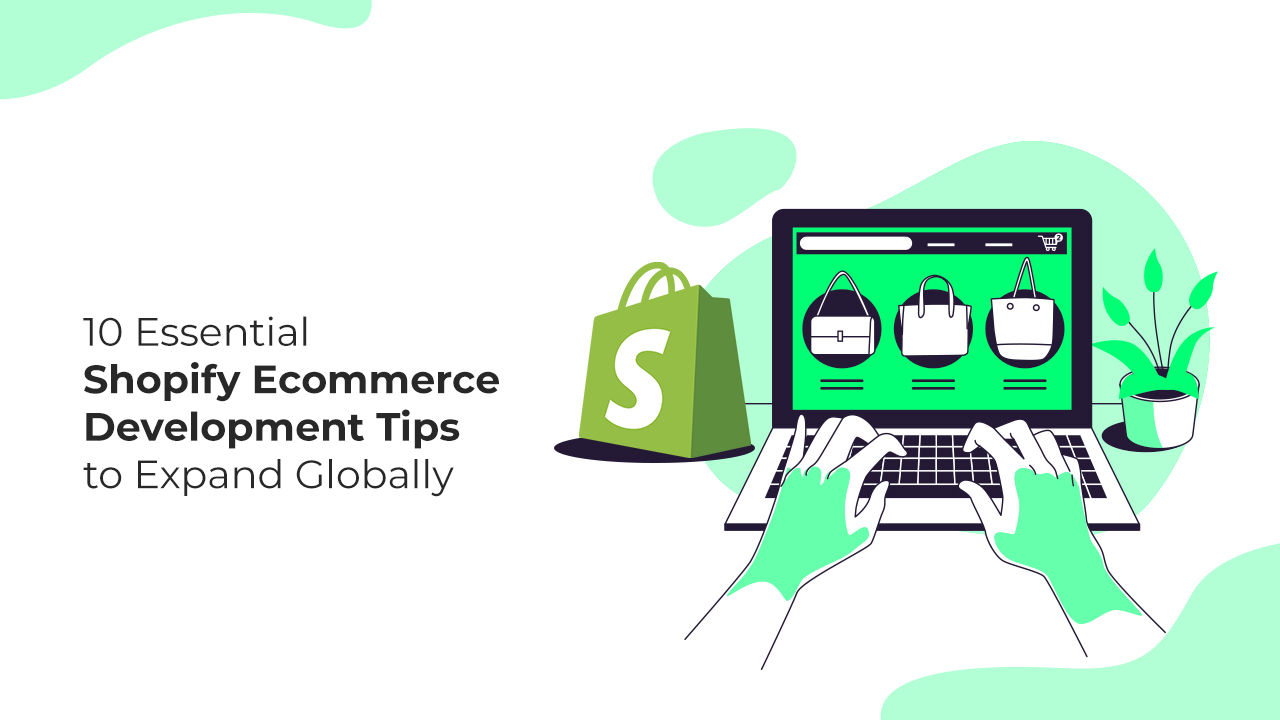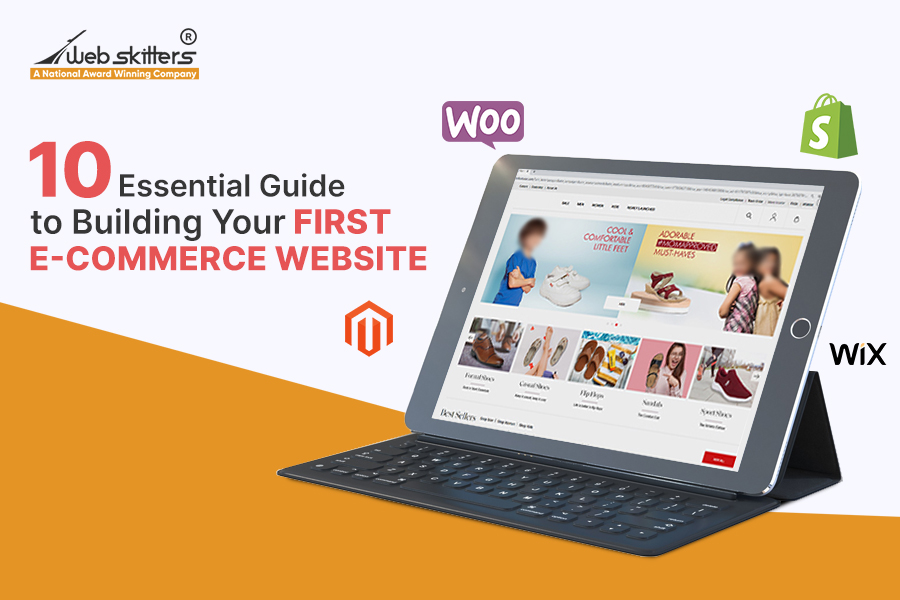
10 Essential Guide to Building Your First E-commerce Website
Digitalization has revolutionized our daily lives to the core. Everything we do – from socializing to shopping – is powered by the internet.
Take online shopping, for instance. The e-commerce market is thriving in the United Kingdom, with expected revenue growth of up to 1.3 trillion dollars in the upcoming years.
It is, therefore, lucrative for every business to promote its brand through a structured e-commerce presence.
E-commerce websites allow you to reach a wider audience and promote the effortlessly. The ideal design and marketing strategies help attract and engage potential customers.
Ecommerce web development is a critical aspect of digital success and brand expansion. This essential guide for e-commerce websites helps you quickly build your first e-commerce website. Let us dig in.
10 Steps to Building an E-commerce Site for Online Brand Expansion
Eight out of 10 e-commerce stores fail to make it big in this competitive industry. Following the ideal steps and implementing the strategies for a competitive edge is critical.
This section will delve into various vital steps of building an e-commerce website design. We recommend hiring a reputable e-commerce development company for effective design and marketing prowess.
1. Choosing the Right E-commerce Platform
E-commerce platform selection is a critical decision in the development process. It determines the success equation and impacts store management. Additionally, the choice of platform impacts further strategies and user experience enhancement.
Open-source e-commerce platforms offer elevated flexibility in e-commerce website design. The codebase can be modified for added functionalities. However, while the initial investment is nil, store maintenance is expensive.
Conversely, SaaS-based e-commerce platforms offer enhanced functionalities and top-notch security and integration.
Here are a few e-commerce platform options for online store creation –
- WooCommerce is free to use and download WordPress plugins, and integration of various functionalities and third-party tools is effortless. The extensions library offers scalability opportunities, and the customizability makes it perfect for e-commerce needs.
- Shopify is a distinguishing platform in the e-commerce market, offering an all-in-one solution for e-commerce needs. Business owners can utilize several features to grow their businesses and elevate user experience.
- Magento is a cloud-hosted PaaS e-commerce solution that can be seamlessly modified to meet business needs. The feature flexibility offers complete control of the online store. However, it is vital to seek professional support for elevated store management.
- Wix is another SaaS e-commerce solution with a user-friendly interface suitable for beginner-level businesses in the e-commerce domain. The platform offers omnichannel selling features and advanced features to control site abandonment.
Apart from these renowned names, businesses can opt for Prestashop, Bigcommerce, and other e-commerce platforms. Each has its strengths and weaknesses and can be leveraged for unique benefits.
Factors to Consider When Choosing an E-commerce Platform
Selecting one from the vast number of e-commerce platforms can be daunting. Several factors heavily impact the store management experience and influence growth and expansion.
Here are the key factors to keep in mind –
- Platform cost is an essential aspect. It involves platform fees, theme expenses, upfront development, and maintenance charges. It is vital to choose one that aligns with the budget.
- Some e-commerce platforms are more user-friendly than others. Business owners do not require technical expertise to manage their presence or incorporate strategies.
- It is ideal to choose a flexible and customizable platform. It helps create a user-focused presence and implement strategies for organic growth.
- Beyond functionality and platform ease, scalability is a mandatory aspect. It ensures the e-commerce website will effectively scale with brand growth, allowing more traffic and further enhancement.
Budget, scalability, flexibility, and ease of use are essential for a growth-focused e-commerce platform. It offers a vital user experience and an opportunity to achieve better ROI through increased sales.
2. Ecommerce Website Design
Design is a vital aspect of e-commerce development. It creates the first impression and decides the custom journey forward. A terrible and cluttered web design immediately leads to website abandonment. Therefore, it is vital to hire professionals who work diligently to create a conversion-friendly web design.
An e-commerce web design must attract, engage, and influence the audience to take the next step in the sales funnels. Here are the essential e-commerce website features for visual appeal and quality design –
- Navigation – The design must be easy to navigate, and users must effortlessly find the essential elements. Additionally, a simple structure aids the cause, and utilizing a site map is still a strategy.
- Visual Appeal – Humans are visually influenced creatures, and a quality design helps attract and engage potential customers. When planning the e-commerce store, prioritize visual appeal and interactive elements for an elevated user experience.
- Responsive – The presence must be highly responsive across devices. The Smartphone era demands a mobile-friendly presence that functions effortlessly across multiple devices.
- Intuitive -An intuitive e-commerce presence relies on customer research to understand behavior and deliver an impactful journey. Additionally, intuitiveness is directly related to sales and revenue.
- Conversion-friendly -The primary focus of the design must be conversion. This means converting your website visitors into paying customers. Professional e-commerce designers implement various design elements to guide users toward a possible conversion, which can vary from a purchase to a newsletter subscription and more.
The design speaks volumes about an e-commerce platform, and a professionally structured one prioritizes user-friendliness and returns on investment. When consulting with an e-commerce development company, discuss the attributes of web design to ensure that the presence serves the purpose of digital growth.
3. Setting Up Essential Features
Once the store is finalized and an appeal is set, let us comprehend essential e-commerce store features. Here are three must-haves e-commerce features for a smooth shopping experience –
- Product Search – Searching for products and collections must be effortless, even for first-time store visitors. Integrate a search bar with relevant filters like price, size, and color. Auto-complete suggestions and clear search result pages keep users moving toward a conversion.
- Reviews and Ratings – Social proof is powerful. It allows customers to leave reviews and prominently showcase product ratings. Positive reviews elevate credibility and encourage users to take action.
- Secure Payment and Streamlined Checkout – Security is paramount, especially in an e-commerce store. Reputable payment processors ensure safe transactions. Additionally, keep the checkout process simple and efficient. Minimize required information and offer multiple payment options for a frictionless experience.
Consider third-party plugins for advanced search functionality and review management. Furthermore, display security badges to portray credibility. This will help users shop confidently and reduce cart abandonment.
4. Optimizing for SEO
Visual appeal alone does not promise foot traffic; every business must implement other tactics. Here is where SEO, or Search Engine Optimization, comes in.
Prioritizing optimization measures increases the chances of appearing at the top of search results, where people search for the best products you offer. Ranking at the top of the results translates to more visitors and potential customers.
Here is how to get started with the best SEO practices –
- Identify relevant keywords that people are searching to find your products. Utilize these keywords throughout product titles, descriptions, and website content. Quality content is the cornerstone of a successful ranking strategy.
- Write informative and engaging product descriptions that highlight features and have relevant keywords. Answer common customer questions and provide details that help them make informed decisions.
- Schema markup translates your website to search engines for better understanding. It leads to better ranking in searches and increased clicks.
Most e-commerce platforms offer schema markup features, so utilize them to your advantage.
- Website speed and mobile-friendliness are crucial SEO factors. Ensure the website loads quickly and looks great on all devices. Prioritize website responsiveness and get help from a professional ecommerce development company.
The steps ensure an SEO-friendly website that attracts organic traffic and helps the e-commerce business flourish.
5. Implementing Security Measures
Credibility is a success factor in the e-commerce domain. Website security protects customers’ sensitive information and builds confidence among new visitors.
Here are key security measures to implement when developing the e-commerce store –
- SSL Certificate: An SSL certificate ensures a secure connection, especially for sensitive information like payment details. Look for the padlock symbol and ‘HTTPS’ in the address bar to confirm an SSL certificate is present. To learn more about SSL protection, consult with e-commerce development experts.
- Data Protection Best Practices: Implement strong measures to safeguard customer data. It entails implementing complex passwords, regularly updating software, and storing data securely. Consider compliance with data privacy regulations like GDPR or CCPA to further demonstrate your commitment to security.
Maintain a transparent privacy policy outlining how you collect, use, and protect customer data. Update the website and security software regularly to address potential vulnerabilities. Users must feel secure and comfortable making a purchase.
6. Selecting Payment and Shipping Options
Lack of choice in payment can be an abandonment factor. It is vital to offer diverse payment methods and shipping options for a comfortable purchase journey.
To cater to different user needs, you can offer multiple payment options, such as credit cards, debit cards, digital wallets (e.g., Apple Pay, Google Pay), and even buy-now-pay-later services.
Reputable payment processors like Stripe and PayPal ensure secure transactions. The methods streamline the checkout process for you and your customers.
Additionally, you must provide a range of shipping options to balance speed and cost. Display shipping costs and estimated delivery times for each option. Offer real-time shipping cost estimates based on the customer’s location and cart weight.
Trusted e-commerce developments agencies help integrate payment procedures. They know the best practices and can give your brand a competitive advantage.
7. Customizing Your Store
E-commerce website development cannot be a one-size-fits-all approach. Customization helps personalize each visitor’s shopping journey, increasing engagement and sales.
Here is how to leverage customization for your store –
- Utilize customer browsing history and past purchases to suggest relevant products. It makes shopping more efficient and introduces visitors to items they might enjoy, thereby promising a conversion.
- Many e-commerce platforms offer options to customize design elements. You can modify banners, pop-ups, and product page layouts.
- Capture customer email addresses during checkout. Use the information to send targeted email campaigns with personalized product recommendations and exclusive offers.
For advanced features, consider exploring plugins or add-ons. For instance –
- Product recommendation engines
- Email marketing automation tools
- A/B testing tools
Strategically employing customization techniques can create a dynamic and engaging shopping experience. This helps set your store apart and keeps the traffic flowing.
8. Optimizing User Experience
A thoroughly optimized store ensures every visitor experiences a lasting impact with your store presence. It entails smooth navigation, a positive browsing experience, an appealing design, and more. Additionally, the e-commerce store with optimized elements ensures improved sales and ROI.
Here is how to leverage professional e-commerce optimization techniques –
- Focus on simplified navigation. No customer, even the returning ones, must not be confused by the website structure. A user-friendly, intuitive presence possesses digital authority and trust and elevates user experience.
- Do not forget about website speed. A second delay in website loading can lead to 50% of potential traffic loss. Take professional help to ensure the website is functional across devices and loads swiftly.
- Accessibility in design ensures all utilize the e-commerce website. This includes people with disabilities, such as vision trouble, color blindness, and cognitive discomfort. Aged users must have a similar digital experience as tech-savvy youngsters—this has a positive effect.
Optimization is more than specific website design changes. It ensures a competitive edge and makes the web presence user-focused.
9. Launching Your Ecommerce Website
Once everything is in place – from design to product upload and privacy policy to customer services – it is time for a website launch.
- Test all features meticulously and ensure a smooth checkout process, functioning search bar, and clear product information.
- Review the website’s appearance and usability across various devices—desktops, tablets, and mobiles. It should offer smooth browsing.
- Verify that your SSL certificate is active and all security protocols are in place.
Marketing Ideas to Take Note –
- Create engaging social media posts announcing the website launch. Highlight unique products, upcoming promotions, and special offers.
- Leverage email campaigns if you have a list. Send targeted email blasts to announce the launch, offer pre-launch discounts, and generate anticipation.
- Partner with relevant influencers in your niche. Offer early access to the products in exchange for promoting the launch. Influencer marketing is promising in today’s market and can significantly boost brand awareness and drive sales.
A successful launch does not happen overnight. Develop a long-term marketing strategy to keep the audience engaged and sales growing.
10. Maintaining and Updating Your E-commerce Site
An e-commerce website needs regular observation and maintenance to run smoothly. Here is why ongoing maintenance and updates are crucial –
- The digital realm is evolving rapidly. Regularly update the website with new products, trends, and promotions to stay relevant.
- Security is paramount, and new threats emerge constantly. Regularly update software, plugins, and security certificates to address vulnerabilities and protect customer data.
- Schedule regular backups of the website data to stay protected from unexpected issues.
- A slow website is frustrating. Monitor website speed and optimize images and code to ensure a fast-loading experience.
- Many e-commerce platforms rely on plugins for added functionality. Keep these plugins and extensions updated to ensure compatibility and avoid security risks.
E-commerce is evolving, and staying informed of industry trends is vital. New technologies and best practices are introduced to keep websites competitive.
Additionally, seek feedback from your customers through surveys or reviews. Use the information to improve e-commerce functionality and user experience.
Kickstarting the E-commerce Journey in 2024
We have ended this essential guide for e-commerce websites, and we hope you have gathered lucrative insights before launching an e-commerce store. All might appear overwhelming, especially if you are new to the domain.
Remember, an e-commerce web store to thrive in this competitive market, it must offer a frictionless experience. From navigation to design elements and call-to-actions to payment gateways, each instance must be user-focused for an elevated experience.
The user experience will determine whether customers return to or abandon the website. Therefore, focus on the strategies discussed and rely on best practices.
There is no harm in not being technologically adept and seeking help from a professional e-commerce web Development Company.
At Webskitters Technology Solutions Pvt. Ltd., our expert team focuses on delivering state-of-the-art e-commerce web development services with the best functionalities and appeal. With a proven track record of developing high-converting ecommerce stores, we can transform your dream into reality.

 Ecommerce Development
Ecommerce Development 